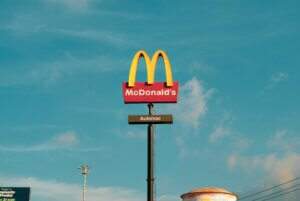
California’s minimum-wage law, which went into effect in April 2024, currently requires that fast-food restaurants with 60 or more locations nationwide increase their workers’ pay to $20 an hour, which is $4 higher than the state’s minimum wage.
Additionally, it installed the Council, composed of industry representatives and restaurant workers, who are authorized to boost the wage annually by up to 3.5%, based on inflation. The Council also advises on health and safety standards for fast-food workers and combats issues like wage theft.
Although the bump in pay is intended to help improve the standard of living for more than half a million fast-food workers, there may be unintended consequences that could do more harm to these employees, including restaurant closures, job cuts, reduced hours and increased deployment of automation to bring down expenses.
Technologies To Replace Human Workers
There has been an increase in automation and self-service technology. Restaurants are deploying self-order kiosks, kitchen automation software and other labor-saving technologies to reduce reliance on human workers.
A major Burger King franchisee in California confirmed plans to install kiosks at all locations in response to the $20 wage, Business Insider reported.
“We are installing kiosks in every single restaurant,” Harsh Ghai, who owns 180 fast-food restaurants in California, including about 140 Burger King locations and numerous Taco Bell and Popeyes restaurants, told BI in an interview in early April.
Fast-food chains are adopting a range of AI, robotics and automation technologies across their customer-facing and back-end operations in order to reduce labor costs and address staffing shortages, while robotic kitchen assistants and software are automating more behind-the-scenes tasks.
Restaurants like McDonald’s, Shake Shack, Panera Bread are deploying self-service kiosks that allow customers to place orders themselves, reducing the need for human cashiers.
The self-ordering systems offer improved precision in order-taking and tend to encourage higher spending from customers.
“Average kiosk sales see 10% higher checks than front counter sales and excellent profit flow-through,” Yum Brands CEO David Gibbs told investors last August.
The additional use of mobile apps for ordering and paying streamlines transactions and further reduces staffing needs. AI and automation are also being applied to back-office processes, like inventory management and scheduling, to increase efficiency.
Making Cuts And Reconsidering Plans
Some restaurants are cutting employee hours, having fewer workers per shift to control labor costs, while others are letting go of staff.
Michaela Mendelsohn, the CEO of Pollo West Corporation, one of the largest franchisees of California restaurant chain El Pollo Loco, who was also appointed to Newsom’s Fast Food Council, confirmed to Good Morning America in April that El Pollo Loco had to cut employee hours by 10% to reduce costs.
Moreover, Pizza Hut announced layoffs of over 1,200 delivery drivers in California due to the wage hike.
Chains, like Vitality Bowls, have streamlined menus by adding more pre-made items and eliminating labor-intensive offerings to reduce ingredient costs and prep work.
Some franchisees have reconsidered plans to open new locations in California due to the wage hike. Existing restaurants may close or pause hiring if they cannot sustain profitability with the increased labor costs.
Rubio’s Coastal Grill has shut down 48 of its locations in California due to the high operational costs in the state.
“Making the decision to close a store is never an easy one,” the company said in a statement. “The closings were brought about by the rising cost of doing business in California.
Higher Food Prices For Consumers
To offset the higher labor expenses, fast-food restaurants are raising menu prices for customers. According to Ghai, his restaurants usually implement annual price increases of 2% to 3%. However, in the past year, he has been forced to raise prices more significantly, between 8% and 10%.
He explained that most of this price hike is being used to offset the rising costs of food ingredients due to inflation. Ghai pointed out that these increases are not even sufficient to cover the additional labor expenses resulting from the recent minimum wage legislation.
Chipotle implemented a price increase of 6% to 7% on menu items in its approximately 500 California locations to offset the reduced profit margins resulting from the new minimum wage law.
What Now?
Finding a balance between raising wages to improve the quality of life for workers and ensuring businesses remain profitable is a key challenge. The law’s focus on large chains failed to take into account the impact on smaller, independent fast-food restaurants that might struggle to absorb high labor costs.
It’s important to note that these are just some of the early observations. As more time passes, we’ll have a clearer picture of its full impact on workers, businesses and consumers.
Source: Forbes


